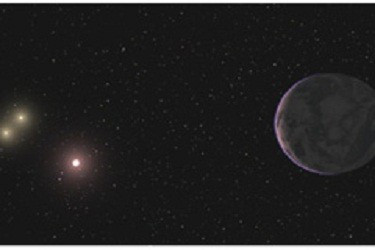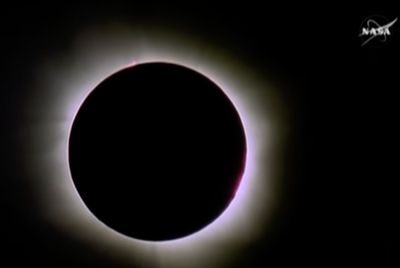Super Earth That Could Support Life Found

Scientists from the University of California at Santa Cruz and the Carnegie Institution for Science in the U.S have discovered a super-Earth that may have extraterrestrial life.
Scientists have discovered a potentially habitable super-Earth along with three other planets orbiting a nearby star and it is just 22 light years away from Earth. Super-Earth takes about 28 days to orbit its Sun-like star and its minimum mass is 4.5 times that of Earth. They found that the planet temperature is neither too hot nor too cold for liquid water to exist on the planet's surface and where there is water they will surely be life.
Super Earth orbits around Sun-Like star, GJ 667C which is an M-class dwarf star and the host star is a member of a triple-star system, is where a planet revolves that around three different stars. The other two stars, GJ 667A and GJ667B in the triple-star system are a pair of orange K dwarfs, that contains concentration of heavy elements such as iron, carbon, and silicon which is 25 per cent compared to our Sun. Such elements are the building blocks for rocky planets.
According to the scientists, super-Earth receives only 90 percent of the light compared to Earth. However, the incoming light is in the infrared, a higher percentage of this incoming energy should be absorbed by the planet. When both these effects are taken into account, the planet is expected to absorb about the same amount of energy from its star that the Earth absorbs from the sun.
Scientists have also found a system that might contain a gas-giant planet and an additional super-Earth with an orbital period of 75 days. However, further observations are needed to confirm these two possibilities.
"This planet is the new best candidate to support liquid water and, perhaps, life as we know it," said Anglada-Escudé from the Carnegie Institution for Science.
"With the advent of a new generation of instruments, researchers will be able to survey many M dwarf stars for similar planets and eventually look for spectroscopic signatures of life in one of these worlds," he said.
"This was expected to be a rather unlikely star to host planets. Yet there they are, around a very nearby, metal-poor example of the most common type of star in our galaxy," said Steven Vogt, a professor of astronomy and astrophysics at Univerisity of California. "The detection of this planet, this nearby and this soon, implies that our galaxy must be teeming with billions of potentially habitable rocky planets."
© Copyright IBTimes 2025. All rights reserved.





















